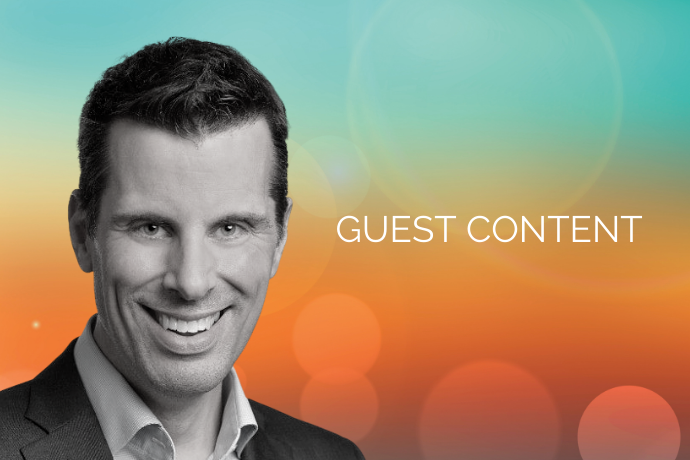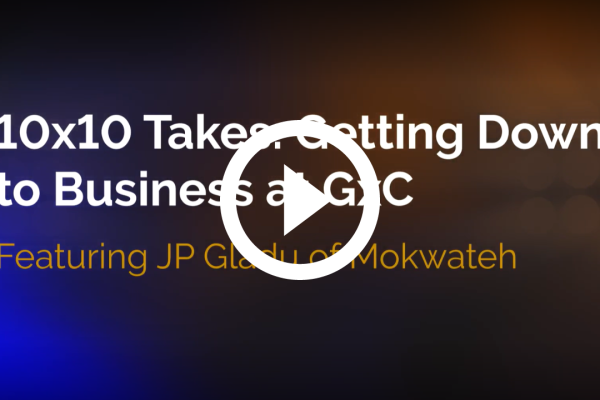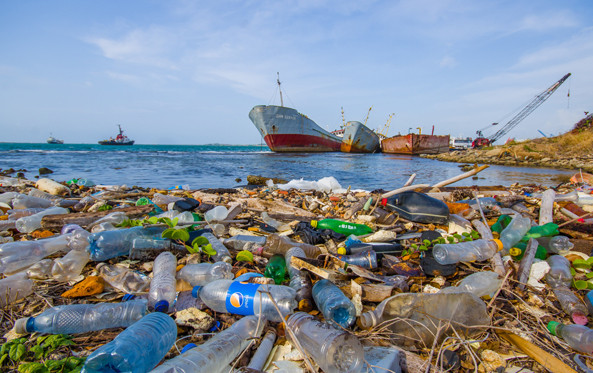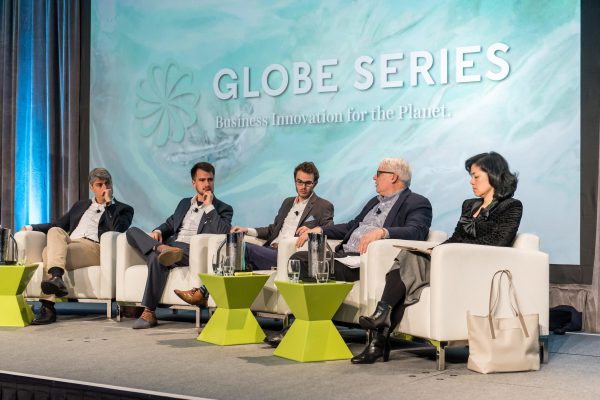GUEST CONTENT
“We must work towards a climate transition that puts people at its centre and leaves no one behind,” Vancity proclaims as part of its commitment to net-zero by 2040. After a year when our environment and social safety nets were tested like never before, this approach seems very timely. Jonathan Fowlie, Chief External Relations Officer, Vancity Credit Union, joined No One Left Behind: How We Build a Just Transition to the Net-Zero Economy at GLOBE Capital to discuss the role of financial institutions in supporting a just transition. We caught up with Mr. Fowlie to learn more about how Vancity has integrated an equity lens into its climate commitments.
Tell us more about Vancity’s net-zero commitments.
We’ve recently released five commitments on climate action and climate justice that take a holistic approach to how we as a financial institution can respond to the climate emergency. It starts with decarbonization and getting our lending portfolio to net-zero. We’re also working to enable responsible investments that create a clean and fair future. This past year has exemplified how a global event can widen the systemic gaps in our economy. The climate emergency is having and could have a similar impact. We’re applying this systemic view to climate change to anticipate community and economic impacts.
Earlier this year, Vancity became the first financial institution in Canada to make a commitment to net-zero emissions by 2040 across your full lending portfolio. To ensure success, you’ve gone one step further by also committing to regular targets on the road to 2040—the first of which will be in 2025. How will you set that 2025 target?
In its most basic form, Vancity was carbon neutral across our operations in 2008. We know we can have a much greater impact on reducing emissions by extending this commitment to what we finance, i.e. the loans we give people to buy homes or start businesses. Our 2025 target will aim to reduce these finance-related emissions.
The first step is understanding the carbon footprint of our loans. If you have a Vancity mortgage on your house, what are your emissions and how do we record that? Our most recent annual report discloses the emissions that we estimate to be associated with our loans. The next step, which we’re undertaking right now, is a rigorous science-based process to understand Vancity’s pathway to net zero with that inclusive lens in mind. Once we identify that pathway, we’ll engage government to ensure we’re aligning with current regulations. Then, we’ll be ready to publicly commit to targets that are aggressive, achievable, and science-based.
What actions is Vancity taking to incorporate equity into its climate work and why do you think it’s important that we include equity in climate finance conversations?
Getting to net zero is important. How we get there is essential. As I mentioned earlier, the pandemic has shown us the impact a global event can have on marginalized communities. We also saw how a financial institution like Vancity can immediately meet those needs. We have a history of financial inclusion—of trying to serve the underserved. That approach has become all the more relevant during the pandemic.
For example, on Vancouver’s Downtown Eastside, health restrictions have interrupted a lot of the services that residents rely on. In the first months of the pandemic, various levels of government introduced new and increased benefits to support the safety and well-being of vulnerable and hard-hit individuals. As a financial institution, our role is to form a bridge between the resources being made available and the people who need to access them.
Our Pigeon Park Savings branch was the only financial institution in the Downtown Eastside that stayed open during the height of the pandemic. We see this as an illustration of financial inclusion and how it can ensure systemic gaps aren’t widened in extreme situations.
We’re taking the same approach to the climate emergency with a view to ensuring the transition to a clean economy will be equitable and just. That means talking a little bit less about decarbonization and climate and more about understanding existing inequities and of course, including marginalized communities in that conversation.
When it comes to the just transition, what do you think is the biggest opportunity and the biggest challenge?
The biggest challenge is ensuring the transition is just. What do I mean by that? We’re at a place where we look ahead to the effects of climate change and we’re still not entirely clear on the questions we need to ask, the things we need to measure, and the actions we need to take. Some are apparent, but some, as we saw during the pandemic, emerge as secondary and tertiary issues. How do we ensure we can adjust and be flexible?
Conversely, the biggest opportunity is to re-imagine our economy. How can we shift, innovate, create leaders, and form the jobs of tomorrow? We’ll need to consider the skillsets of people across our economy. Part of that is considering the workforce that will need to transition from a job that might not exist 10 years from now into a job that is driving innovation. It’s also about creating opportunities that make our economy more equitable and inclusive.
When you ask people: do you think there needs to be a fundamental change towards an economy that is cleaner and fairer? Unanimously, you get a yes. It’s not at all clear exactly what that future looks like, but that consensus creates an opportunity to chart a new path.
How can financial institutions take a leadership role in the just transition?
Financial institutions like credit unions and banks make crucial decisions every day about where money goes, what gets funded, and who benefits. So, we have a crucial role to play in determining the future economy and frankly the future of our planet. Accordingly, there are a number of questions that all financial institutions should be asking: Are we just offsetting climate impacts? Are we working to avoid them in the first place? How are we measuring the changes to our balance sheet in a rigorous way that ensures transparency? Finally, how do we ensure that the actions we are taking are leading towards an economy that is both clean and fair? I strongly believe that we have an obligation to understand the impacts of our decisions on where to allocate capital, because those who have the least to do with causing climate change in the first place are those who will be impacted the most and who will have the least available resources to adapt. We have a unique opportunity right now to learn from the past and explore what it means to truly build back better.
If you could ask the GLOBE Capital community to take one action, what would it be?
I’d ask the GLOBE Capital community to bring an equity lens to every action they take on climate. For example, when you’re looking at climate risk across a portfolio of buildings, consider the demographics of the locations and local people’s ability to adapt. Considering equity means asking: are there choices that we can make today to ensure we’re not only protecting our investments against climate risk, but we’re also fostering equity and resilience? It goes back to the premise that yes, we need to decarbonize. We could do that overnight by just stopping funding a variety of activities, but that’s neither practical nor will it lead to an equitable economy and society. So, we need to ensure we’re inviting everyone into the conversation and framing that conversation in a way where everyone, particularly marginalized communities, can see themselves reflected.




